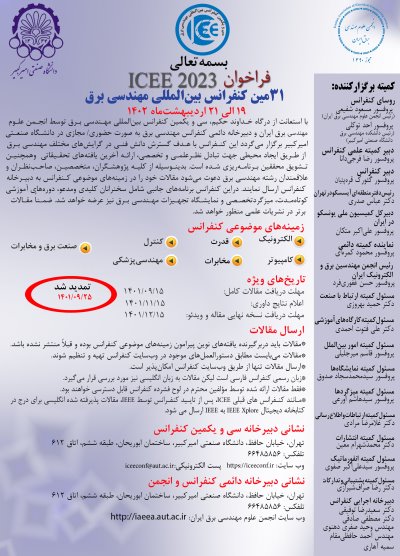0% Complete

نویسندگان :
کلمات کلیدی :
چکیده :
لیست مقالات بایگانی شده
Soheil Hakakzadeh - Seyed masood Mostafavi - Zahra Kavehvash
Zahra Kashi - Nargess Sadeghzadeh-Nokhodberiz
Fatemeh Alvankarian - Ahmad Kalhor - Mehdi Tale Masouleh
Saeedreza Tofighi - Farshad Merrikh-Bayat - Farhad Bayat
Mohammad Amin Basiri - Shirin Chehelgami - Erfan Ashtari - Mehdi Tale Masouleh - Ahmad Kalhor
علی ضیائی - رضا قاضی - روح الامین زینلی داورانی
Maedeh Jamali - Nader Karimi - Shadrokh Samavi
Amirhossein Rahmankhanloo - Saeed Khankalantary - Ali Akbar Vahedi
Mohammad Reza Kavianinia - Mohammad Javad Emadi
Mohammad Ahmadi - Emad Ebrahimi





